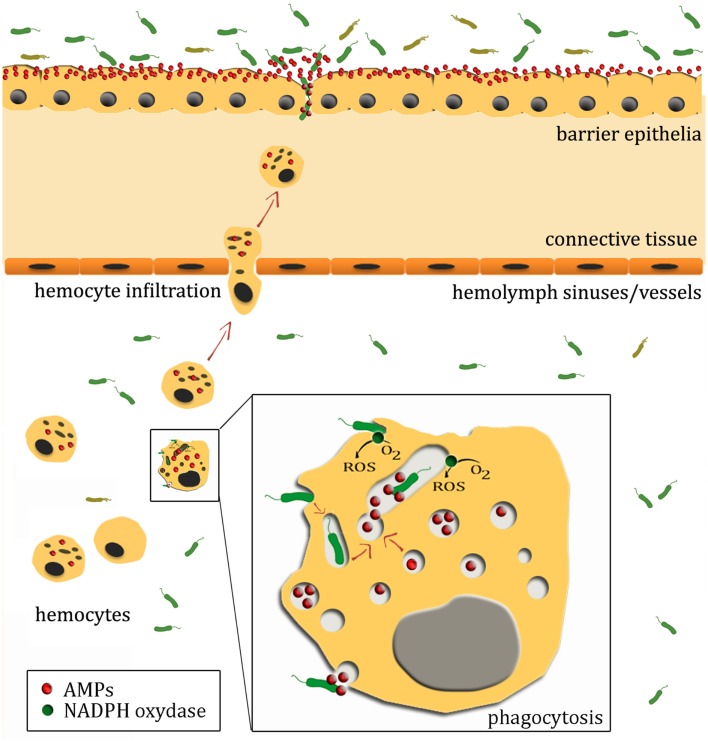Figure 1.
A not-to-scale schematic illustration of oyster antimicrobial defenses. Oyster epithelial surfaces are in contact with an abundant microflora that can offer a competitive environment that prevents the establishment of potential pathogens. In healthy oysters, surface epithelia constitutively express AMPs, which also contribute to prevent invasion by pathogens. Upon wounding or infection, damage- or pathogen-associated molecular patterns trigger hemocyte infiltration to the site of infection. Infiltrating hemocytes serve as vehicles for AMP families that display synergistic activities with AMPs from epithelial surfaces. Upon recognition by pattern recognition receptors/proteins, microorganisms present in tissues and hemolymph can also be phagocytosed and further eliminated by the production of reactive oxygen species (ROS), hydrolytic enzymes, and AMPs. It is still unknown whether AMP-containing hemocyte granules fuse with the phagosome, undergo exocytosis or both.

